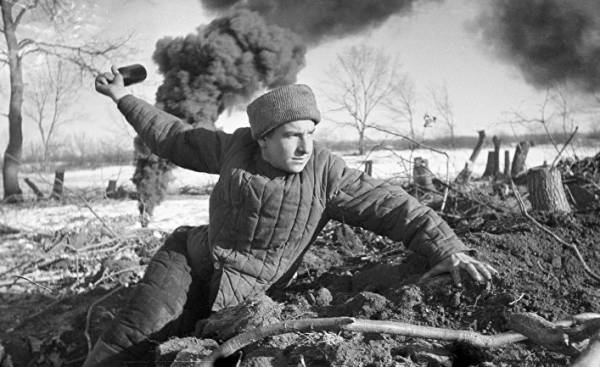
Usually during the war, major combat operations are code names to keep them secret. The enemy in any case does not need to understand what was going on. The attack on the USSR in 1941 was called in different ways: first, “Fritz”, then “Otto” and only then “Barbarossa”.
But the operation, which began on 21 March 1942, in fact, did not require any code names. The one that was chosen was “Lead bridge” and the one who in the spring of 1942 I looked at the map, could easily guess what was discussed: about 100 thousand German soldiers trapped in the boiler under damanskom.
On February 20, six divisions of the Wehrmacht were cut off by Soviet troops during the winter offensive. Since then, the group of armies “North” was preparing for the operation for their extraction. However, due to the 30-degree frost had serious problems with logistics.
Responsibility for the operation was entrusted to Lieutenant-General Walter von Sedlica-Kurzbach (Walther von Seydlitz-Kurzbach), which until the end of 1941 he commanded the 12th infantry division, which is now under the leadership of his successor — has got itself in Demyansk boiler.
Operation “Fire bridge” was paramount; it was assumed the movement of troops from Staraya Russa to the North-West of the blockaded territory. With this purpose, the German command pulled back some powerful military units of the Wehrmacht. The main burden fell on the 5th and the 8th light division, which only recently “refreshed” in France and received new weapons. It was a large motorized formations, has a tank platoon.
On the flanks had to act infantry division. One of them, 18 division ID, however, in December 1941, heavy fighting has lost about 9 thousand soldiers, and the other, 329 division ID was created only at the end of last year. In addition to these four divisions, General Seydlitz-Kurzbach had several shelves of other major compounds and one battery of self-propelled guns, tanks replaced. Overall, not such a powerful force.
Hitler ordered an immediate offensive on March 21, 1942, at 13.00 hours by notifying the commander of group of armies “North” Colonel-General Georg von Kyukhler (Georg von Küchler) and Walter von Sedlica. By this time already began the “intense activity of the German assault teams and spies.”
Thus, the operation “Fire bridge” started a powerful offensive, and a small separate attacks in the second half of the day. Both advanced divisions, according to the command to depart “with immediate success, while the right wing had to face “stiff resistance” of the enemy. However, six locked divisions, called the reports “fortress Demyansk” 22 March “relieved”.
But that was not all. Because two days later began a strong warming, and frozen ground suddenly turned into impassable mud, which stuck II light tanks and self-propelled guns. The command of the German troops were forced to report: “When the fortress Demyansk do manage to release, yet impossible to foresee.”
The red army sought at all costs to prevent breakthrough troops Sedlica to the “pot”. To the aid of Soviet units came two battalions of the airborne troops. On 27 March, the command of the Wehrmacht reported: “progress on the Northern sector of the front from Staraya Russa to the liberation of the fortress Demyansk yesterday due to adverse weather conditions was small.”
Three days later Seydlitz even had to transfer to Berlin that further advance was impossible, because his troops were stuck for about half of the 45-kilometer journey. He initiated the regrouping of forces and a shift of the main offensive to the North. Against, however, was made commander of the 16th army, Colonel-General Ernst Busch (Ernst Busch), which has long been in conflict with his boss Kuhleren. This argument lasted at least two days.
2 APR 1942 Sedlica troops resumed the offensive, however, originally planned to be a rapid breakthrough was not the question. By April 15 they managed to reach only to the river Lovat, to which on the opposite side broke through and blocked part. To overcome a total of 20 miles took almost two weeks.
But then this happened: coincidentally, on 30 April, Hitler’s birthday, the troops Sedlica and blocked forces were opposite each other, on opposite banks of the river. Thus, commanders have a reason to file a formal report about breaking the blockade, though the land supply blocked parts managed to establish only a few days later.
However, to truly break through the cauldron of the German troops never managed — they have won only a small corridor width of about four kilometers. An area of about thousand square kilometers around Demyansk was still almost completely surrounded by Soviet troops. But Hitler, who considered it a good starting point for the beginning of a major battle for the environment to the North-West of Moscow, forbade the “straightening” of the front line, which really was necessary. His main interest had been the operation “Blau” — a powerful summer offensive of the Wehrmacht in the southern Soviet Union.







